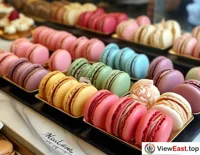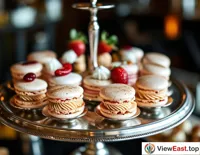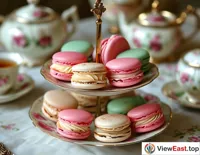







A: The Culture and Charm of French Macarons
French macarons, this exquisite dessert originating from France, have become a favorite in the world of sweets with their unique round appearance, vibrant colors, and delicate texture. They are not just a dessert but also a symbol of culture, representing the French passion for food and pursuit of quality of life.
Cultural Background:
The history of macarons dates back to the 16th century in France, initially made by nuns in convents and later spread to the public, becoming popular in Paris in the 19th century. It is not only a representative of French desserts but also a part of French culture.
Suitable Groups:
Macarons are suitable for all sweet lovers, especially those with unique pursuits in desserts. Due to their high sweetness, people with diabetes and those who need to control sugar intake should consume them in moderation.
Features and Taste:
The feature of macarons lies in their crispy outer and soft inner texture, along with a variety of flavors to choose from. From classic vanilla and chocolate to innovative fruit and floral flavors, macarons always bring surprises to the taste buds.
Appearance:
In terms of appearance, macarons are known for their smooth surface and round shape, usually with fillings such as jam or cream sandwiched between two almond meringue cookies, colorful and visually appealing.
Nutritional Value:
Macarons are mainly made of almond flour, powdered sugar, and egg whites. Although they are high in sugar, almond flour is rich in protein and healthy fats, which are beneficial to health when consumed in moderation.
B: The Process of Making French Macarons
Introduction to Ingredients:
The main ingredients needed to make macarons include almond flour, powdered sugar, egg whites, granulated sugar, food coloring (optional), and various flavored fillings.
Tools Required:
The tools needed to make macarons include: a mixer, a sifter, a piping bag, macaron mats or baking paper, an oven, and a thermometer.
Preparation of Ingredients:
Mix and sift the almond flour and powdered sugar to ensure a fine and lump-free mixture.
Gradually add granulated sugar to the egg whites and beat with a mixer until stiff peaks form.
Cooking Steps:
Add the sifted almond sugar mixture to the egg white meringue and gently fold until well combined.
Fill a piping bag with the mixture and pipe onto macaron mats or baking paper in circular shapes.
Let the macarons rest at room temperature until a thin crust forms on the surface.
Preheat the oven and bake the macarons until the characteristic "feet" form at the bottom.
Seasoning Tips:
Food coloring can be added to adjust the color of the macarons.
The choice of filling can be based on personal taste, such as chocolate ganache, lemon cream, etc.
Serving Suggestions:
Macarons are best enjoyed at room temperature to maintain the best texture.
They can be paired with tea or coffee to enhance the flavor profile.